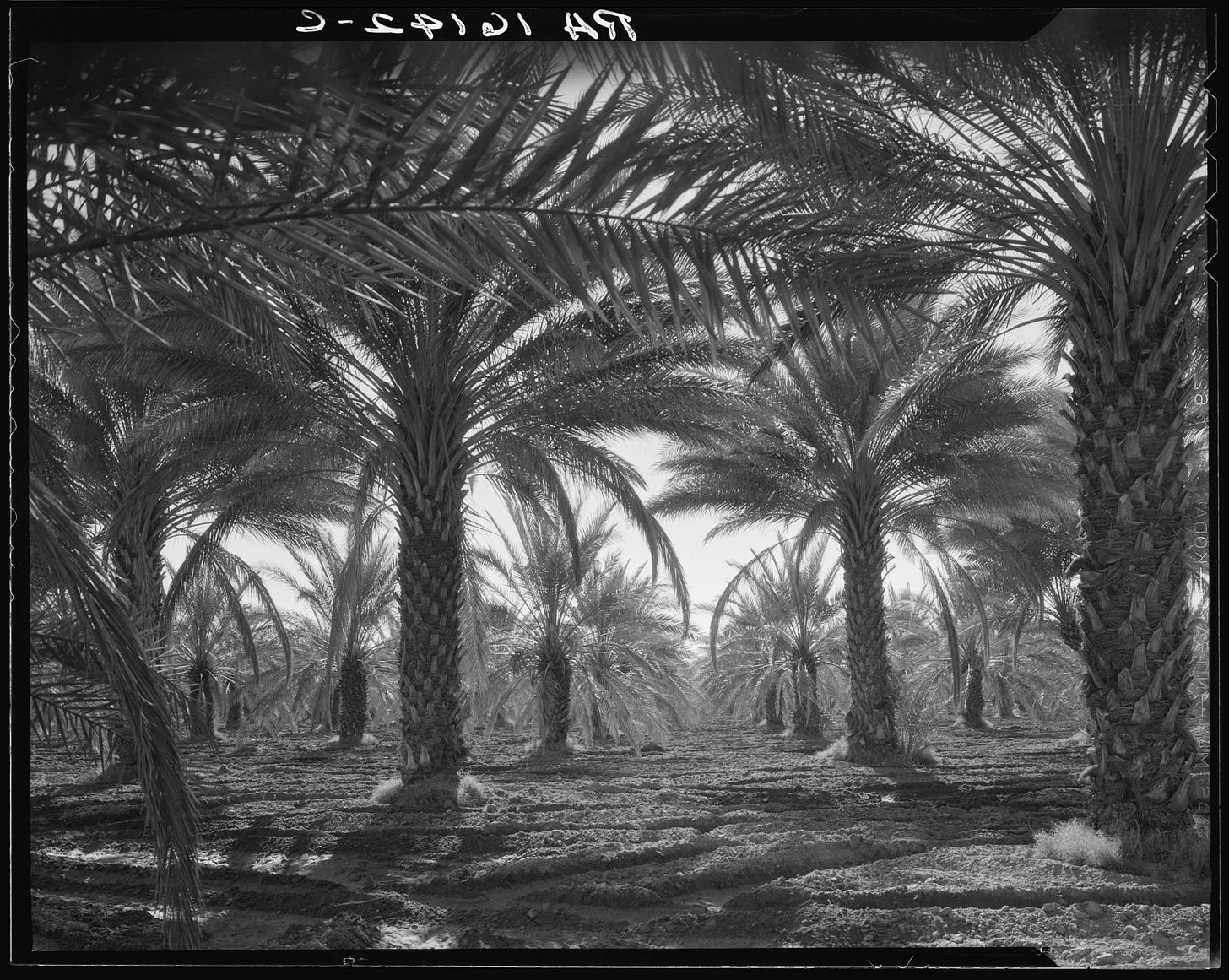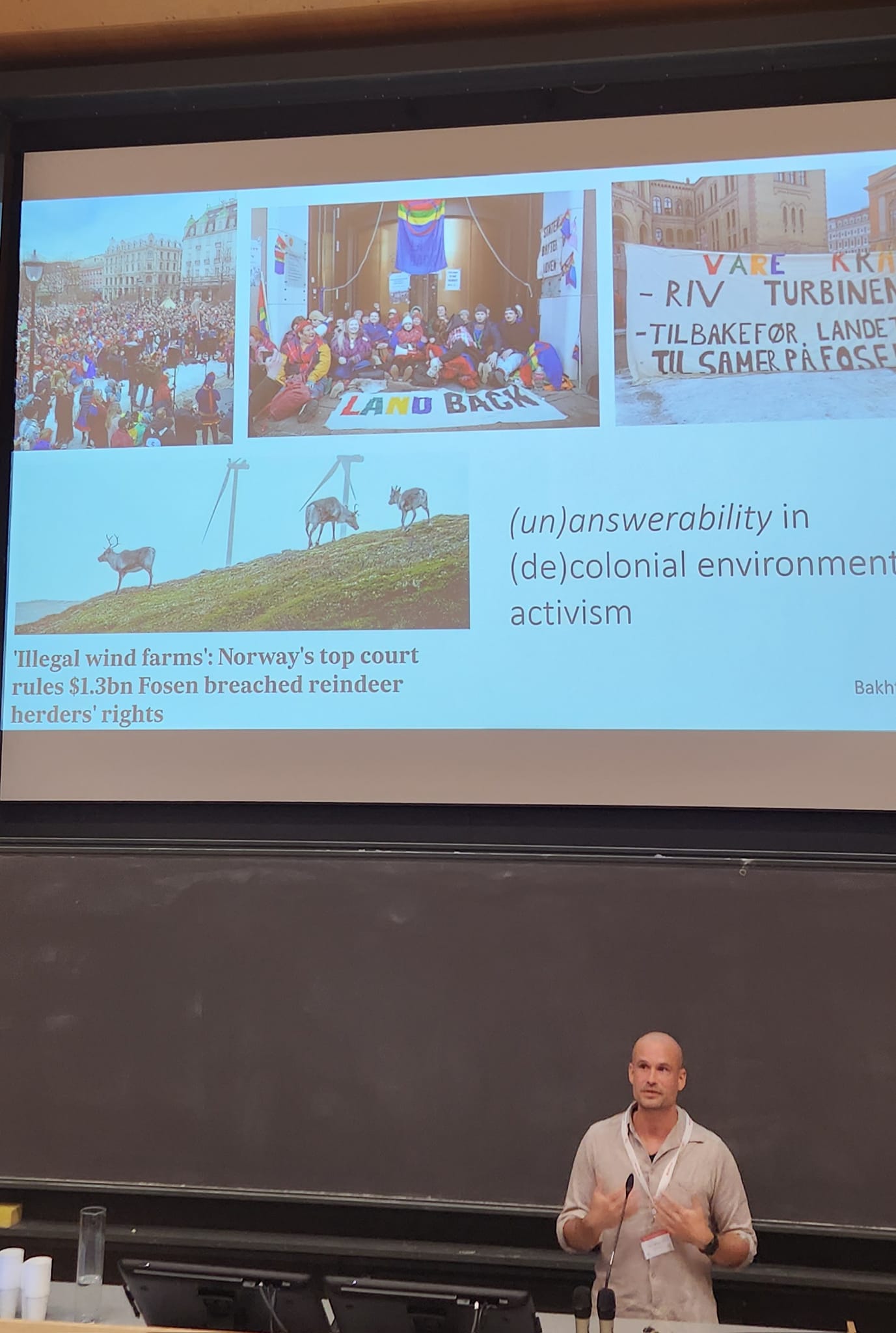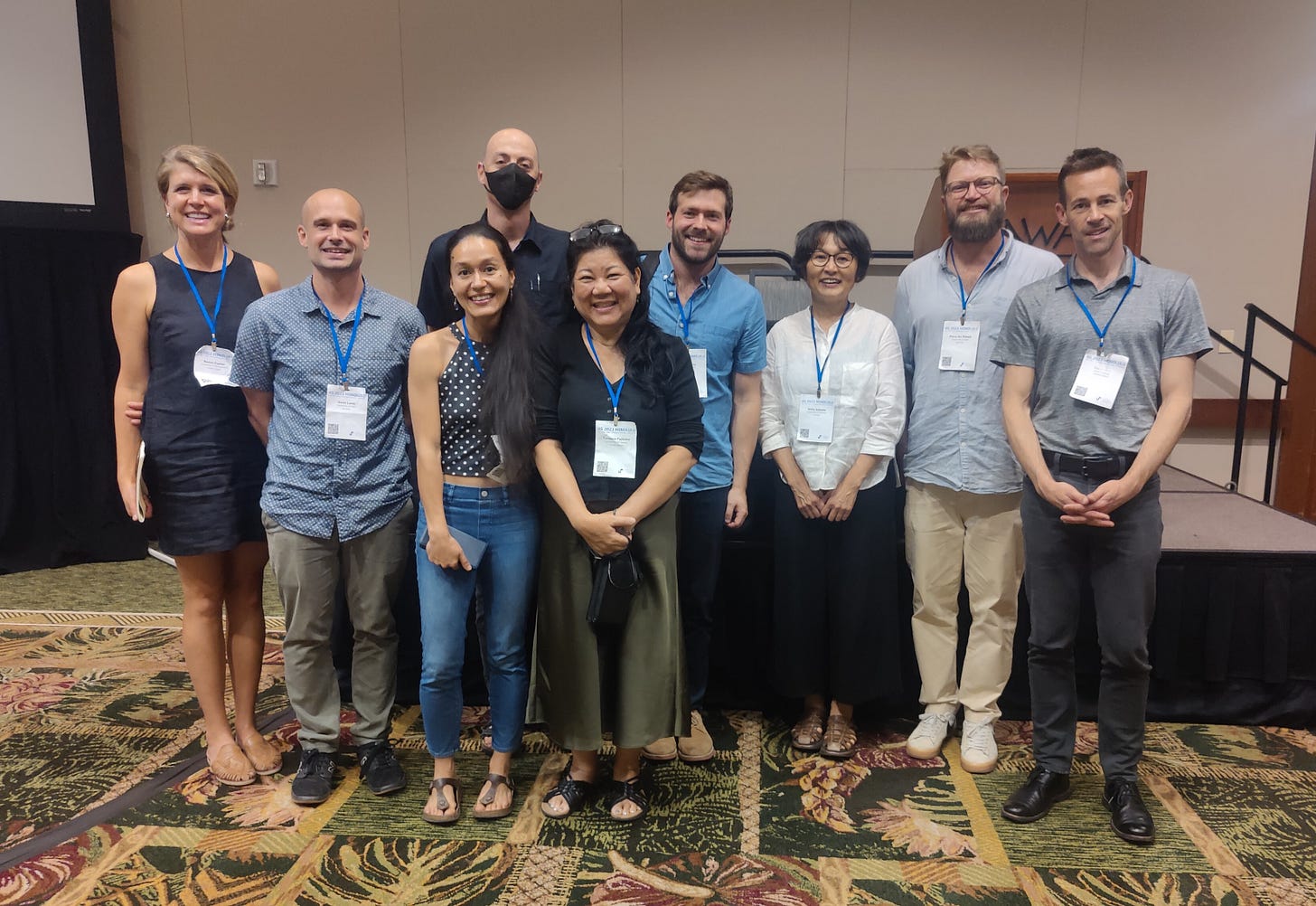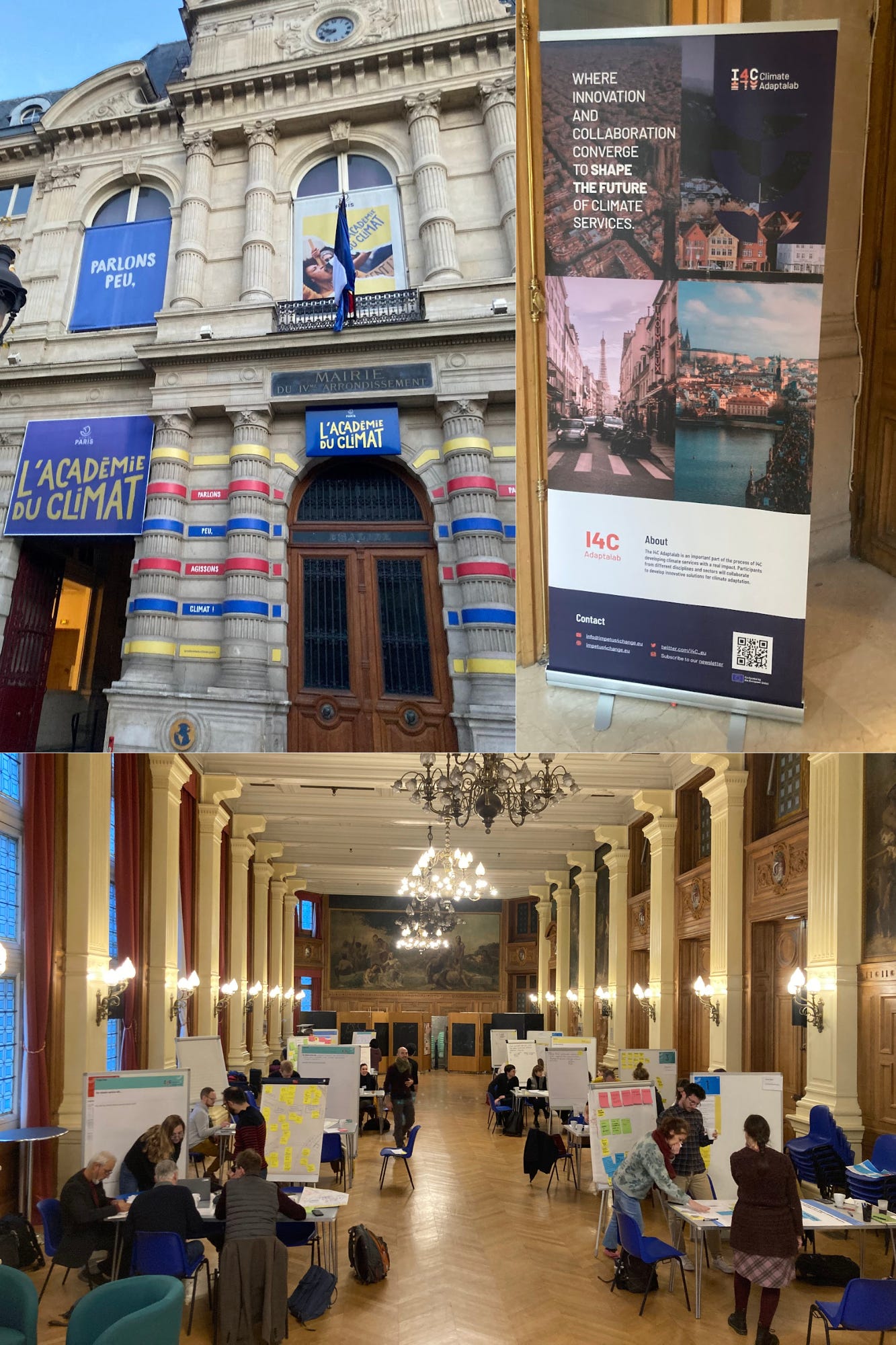🌿Wild Ones #83: Environmental Communication Digest
Wintering and writing breaks + The Climate Academy + Ways of Being + The Sounds of Life & Digital Technology + Human Silence & Animals + More!

Hi everyone, welcome back to Wild Ones, a (hoping to one day be weekly) digest by me, Gavin Lamb, about news, ideas, research, and tips in environmental communication. If you’re new, welcome! You can read more about why I started Wild Ones here. Sign up here to get these digests in your inbox:
As you’ve probably noticed, I’ve taken a bit of a break from this newsletter the past few weeks (or months!). As the fall arrived here in Norway last October, I felt the writing momentum building and was planning to send digests out more regularly. But that writing train left without me sometime in mid-October, and now here we are in February! Yikes, that was not my intention, but I’ll take it as a needed stretch of ‘wintering’ for myself. Unfortunately, it feels like I’m learning how to write this newsletter all over again, so please bear with me over the next few installments I send out over the coming weeks as I defrost from the break. Since it’s been a little while, I feel a good place to start (and also an excuse for my lack of activity here) might be to share some updates from my life with you since mid-October when I sent out my last newsletter.
At the end of October, the Center of Multilingualism in Society across the Lifespan (MultiLing), where I’ve been a postdoc researcher since 2021, held a ‘Closing Conference’ to cap off the the final year of its ten-year run as a Norwegian Center of Excellence. Dozens of presentations were packed into two days involving all the researchers who’ve been affiliated with MultiLing over the years. It was cool to hear about the range of research on language and communication conducted at MultiLing since its was established in 2013. Topics covered included everything from child language acquisition and digital communication to multilingual cognition and sociolinguistic justice. Here is the full program. I presented some of my recent research on language and environmental justice on two panels: “Multilingualism, politics, social justice and language activism” organized by Haley De Korne (you can download her excellent open access book on Language Activism here) and “Language and youth in Norway – practices, spaces and representations” organized by Bente Ailin Svendsen, who co-edited a fascinating handbook that was just published a few weeks ago: The Routledge Handbook of Language and Youth Culture.

Due to the packed schedule, I only had about five minutes to present, so I now have a new found appreciation for communicating my main point as fast and compellingly as possible (That 3 Minute Thesis competition I participated in several years ago as a PhD student at the University of Hawai‘i definitely came in use!). A highlight of the event was actually the opening ceremony, which featured music from a wonderful trumpet player, Hildegunn Øiseth, who joined Frode Fjellheim, a Sámi musician (who I learned also composed the opening theme song, Eatnemen Vuelie, for the animated film Frozen). Together they played several joik or vuelie, which you can listen to here.
In November, I attended the Society for Social Studies of Science conference (4S Honolulu) in Hawai‘i. It was my first time attending this conference which brings together an international group of scholars in the environmental humanities, anthropology and Science and Technology Studies (STS). Watch the excellent opening keynote for the conference by Dr. Kamanamaikalani Beamer, a Professor of Hawaiian Studies at the University of Hawai‘i where he discusses his work advocating for an “Aloha ‘Āina Circular Economy” in Hawai‘i.
I presented on some new research on the panel “More-than-human Landscapes.” with some amazing researchers in multispecies studies whose work I’ve long admired but was happy to finally meet in person! The panel explored human relationships with other species through the lens of ‘landscapes’ (and seascapes too in my case!). In their introduction to the panel, the organizers—Thom van Dooren, Pierre du Plessis, Sophie Chao, and Zachary Caple—described the aim of the panel as an effort to bring multispecies research in the humanities and social sciences into dialogue “…with landscape ecology, hydrology, geology, and related fields, to explore how vividly describing the historical, power-laden, forms, structures, and contours of landscapes (alongside seascapes, riverscapes, and other -scapes) opens up new avenues for understanding and inquiry…”
“…Of particular interest in this discussion is how more-than-human approaches to landscapes create new possibilities for storying both the ending of worlds and diverse processes of resistance to such endings: processes of unworlding and reworlding.”
The talks in our panel explored how human relationships with diverse species, places, and natural elements—from eucalyptus, fungi, and wind, to border rivers, oil palm plantations, and cattle ranching—are reshaping landscapes in destructive ways that are leading to the “ending of worlds” for vulnerable species. But the presenters also shared hopeful stories from their research on efforts to “resist such endings.” In my presentation, I shared some of my recent research that builds connections between ecolinguistics and environmental communication with the field of sensory ecology to better understand human relationships with marine wildlife in a time of climate change (sea turtles and seals in particular). I’ll probably be sharing more about updates from that research in the coming months (as it needs some development!), but for now I just wanted to recommend some of the fantastic research the other panelists have recently published:
In the Shadow of the Palms: More-Than-Human Becomings in West Papua, by Sophie Chao (2022).
Mapping Abundance for a Planetary Future: Kanaka Maoli and Critical Settler Cartographies in Hawai‘i, by Candace Fujikane (2021).
A World in a Shell: Snail Stories for a Time of Extinctions, by Thom van Dooren (2023)
Nature in Translation: Japanese Tourism Encounters the Canadian Rockies, by Shiho Satsuka (2015)
Rubber Boots Methods for the Anthropocene: Doing Fieldwork in Multispecies Worlds, edited by Nils Bubandt, Astrid Oberborbeck Andersen, and Rachel Cypher (2022)
The Fluvial Imagination: On Lesotho’s Water-Export Economy, by Colin Hoag (2022)
Tracking Meat of the Sand: Noticing Multispecies Landscapes in the Kalahari, by Pierre du Plessis (2022)
Toxic Nutrients and Legacies of Harmful Algal Bloom Mitigation in Lake Erie, by Gebby Keny (2021) (pdf).

Another reason I’ve fallen a bit behind with the newsletter is because I’ve been slowly shifting from my postdoc position in Oslo to a new postdoctoral research position in Bergen. As you might know, I’ve been at the University of Oslo since 2021, but recently I started a new research position at NORCE, a climate research center in Bergen, Norway, which is also connected to the Bjerknes Center for Climate Research. It’s been a bit of whirlwind the past couple of months as I’ve been wrapping up research projects at the University of Oslo while also transitioning into a new research position at the climate research center in Bergen, but it’s been exciting to meet climate science and communication researchers, and learn about the work they’re doing at the center here in Bergen, a very beautiful city, and as I’ve discovered, also a very wet city! (the rainiest city in Europe apparently!)
At the beginning of December, I participated in a climate communication workshop called ‘AdaptaLab’ aimed at bringing climate scientists and communication researchers, NGOs and city officials together from several cities in Europe—Bergen, Prague, Barcelona, and Paris— to brainstorm how to develop and improve ‘climate services’ in Europe. Admittedly, climate services is a topic I’m only just beginning to learn about but will probably be sharing more about the field in this newsletter as it relates to my interests in climate and environmental communication. You can learn more about the larger project here if interested. It was great to be in Paris that time of year (or any time of year really), and a highlight for me was to spend a couple days hanging out at L’Academie Du Climat, a really cool venue space that seems to host all sorts of environment and climate related events. (There’s also a neat little vegetarian restaurant/bar inside too called La Buvette I recommend checking out if you happen to be roaming around Paris:).

I’m really looking forward to settling into a new town and being able to focus more on writing, research and teaching now. But I have to say, it was a long stretch the past year and a half applying and interviewing for academic jobs around the world—and to be honest, getting rejected enough to wonder if I’d even continue in academia—but it’s been an exciting few months with starting a new position and moving to a new city (although I probably won’t try moving again in the middle of Norwegian winter!).
Oh, and one more big piece of news from me I should probably mention, now that it’s all official. I’ve just started a new position as an associate professor in the Department of Professional and Intercultural Communication at NHH Norwegian School of Economics in Bergen. It’s a great opportunity for me to continue my research, writing and teaching in ecolinguistics and environmental communication so I’m looking forward to all to come in the weeks and months ahead. In the meantime, I will do my best to keep this little newsletter/digest (still not sure what to call it) chugging along with more consistency in 2024! Thank you again to everyone for supporting my writing throughout my seasonal ebbs and flows, and here’s to another year of Wild Ones:)
Now to the digest! It’s been a good while since I’ve sent anything out, so I thought I would just share some of the memorable essays, research articles, books, podcasts, films and more that have stuck with me over the past couple of months.
📚 What I’m reading
Ways of Being, by James Bridle (2022): “a book about AI, non-human intelligence, ecology, biological computing, more-than-human relations, and much else…”
“Humans are not at the centre of the universe. By stepping aside we can start to imagine what a world in which we are not the most important thing might actually look like, and consider the richness of non-human worlds on their own terms. Yet some measure of anthropomorphism - the attribution of human traits, emotions and intentions to non-humans - is inevitable. It is, when all's said and done, the only way we can begin to understand other living things. We are anthropos, and we have no other means of addressing these worlds than through our own. But if we can consciously bear in mind the fact of our difference, if we can recognize our own limited perspective while not enforcing it upon others, these things need not be a barrier to accessing and acting on the basis of shared interests and intentions. In fact, it is precisely through the acknowledgement of difference that shared action and shared life, without the weight of domination and control, becomes possible. We seek to meet, and not to conquer. We are as comfortable with companionable silence as with talking. We have different words for the same things” (p. 70).
Cosmopolis: The hidden agenda of modernity, by Stephen Toulmin (1992).
“In antiquity, Plato condemned the Sophists' use of rhetoric, as “making the worse argument appear the better.” Aristotle replied to this libel: he treated questions about the conditions on which, and the circumstances in which, arguments carry conviction as ones that philosophers can address with a clear conscience. Right up to the 16th century, philosophers discussed them without any sense that these questions were non-rational, let alone anti-rational; but the 17th century undid this good work. It reinstated Plato's libel against rhetoric so successfully that colloquial uses of the word “rhetoric” have ever since been insulting, hinting that rhetorical issues have to do only with using dishonest tricks in oral debate. (To this day, serious students of rhetoric have to explain that the term is not necessarily deprecatory.)” (p. 31).
👀What I’m watching
also watching:
🎧What I’m listening to
Naomi Klein: Doppelganger: Part One. Between The Covers: Conversations with writers in fiction, non-fiction, and poetry. Hosted by David Naimon.
The Language of Environmental Justice. Pt. 1: We need to talk differently. On The Environmental Justice Lab podcast, with Dr. Lesley Joseph.
Also, while reading James Bridle’s book Ways of Being, he mentioned a 1979 concept album by Stevie Wonder I never heard about: Stevie Wonder's Journey Through "The Secret Life of Plants.” It’s all a bit strange but intriguing! Here are a couple songs I listened to from the album: “Power Flower.” and “Outside my Window”.
🔍 Tools & Resources I’m exploring
“A New Era in Climate Communications is a collaborative effort spanning +60 contributors and organizations developed by the New Zero World in partnership and with the support of the Global Commons Alliance. With this work, we want to lay the foundation for a transformed future through the power of communication and creativity. We are developing a radically new approach which brings together science and creativity to reimagine and rework how we communicate about the climate crisis—the biggest challenge and opportunity facing humanity today.” (Note: I discovered this resource through Julie Mallat’s excellent newsletter, The Climate Propagandist).
📰 News, Events & Reports
Why Indigenous youth are gathering in Oslo to fight a green energy project: Two years after a wind farm was ruled illegal in Norway, Sámi activists are still fighting for its closure. By Elisabeth Rasmussen in Grist (October 10. 2023).
“We’re Dying Here”: The Fight for Life in a Louisiana Fossil Fuel Sacrifice Zone. Human Rights Watch (October 17, 2023). A new 98-page report on “Cancer Alley, an approximately 85-mile stretch of communities along the banks of the Mississippi River between New Orleans and Baton Rouge where people live on the frontlines of some 200 fossil fuel and petrochemical operations — reportedly the largest concentration of such plants in the Western Hemisphere.”
Water protectors in Hawaiʻi took on the US military and won: “On Monday, the U.S. military began draining jet fuel from 20 World War II-era storage tanks in Hawaiʻi, in a victory for Native Hawaiian activists and environmentalists.” By Anita Hofschneider in Grist.
Report: Inside the Fossil Fuel Industry’s Playbook to Suppress Protest and Dissent in the United States (pdf). By Greenpeace:
“This report profiles the industry response to opposition to five major fossil fuel projects ranging from 2014 to the present. The examples reveal widespread public-private coordination to monitor activism, physical and legal aggression toward protesters, extensive corporate lobbying for anti-protest bills that criminalize civil disobedience, and more. But they also reveal a mixed success record for the industry: some states have staved off anti-protest legislation and, across the country, activists and concerned citizens have continued to fight for justice and environmental protection despite the powerful forces opposing them”
Academic Job!: Assistant Professor (Research), Transdisciplinary Environmental Communication, University of Calgary. (Deadline February 12, 2024)
📚 Research
The Sounds of Life: How Digital Technology Is Bringing Us Closer to the Worlds of Animals and Plants. By Karen Bakker, Princeton University Press (2022):
“As Blackfoot philosopher Leroy Little Bear says, "The human brain is like a station on the radio dial; parked in one spot, it is deaf to all the other stations... the animals, rocks, trees, simultaneously broadcasting across the whole spectrum of sentience." Our physiologies—and perhaps our psyches-limit our capacity to listen to our nonhuman kin. But humanity is beginning to expand its hearing ability. Digital technologies, so often associated with our alienation from nature, are offering us an opportunity to listen to nonhumans in powerful ways, reviving our connection to the natural world” (p. 2).
On Environmental Communication as a Care Discipline, by Phaedra C. Pezzullo in Environmental Communication, (January 17 2024).
“Ecological crises abound – both existential and acute. Drawing from conservation biology, which was borrowing from cancer biology, Robert Cox (2007) established the field of environmental communication as a “crisis discipline,” emphasizing that while it is valuable to document unsustainable acts, we also have an ethical obligation to intervene. This position has been foundational in defining environmental communication as a praxis-oriented field. Yet, like all ethical positions, crisis is limited…Extending Cox’s call, therefore, I have argued environmental communication might also be imagined as a care discipline, which: underscores and values research devoted to unearthing human and nonhuman interconnections, interdependence, biodiversity, and system limits. This means we not only have a duty to prevent harm, but also a duty to honor the people, places, and nonhuman species with which we share our world. (Pezzullo, 2017)” (p. 1).
The 2023 state of the climate report: Entering uncharted territory. By
William J Ripple, Christopher Wolf, Jillian W Gregg, Johan Rockström, Thomas M Newsome, Beverly E Law, Luiz Marques, Timothy M Lenton, Chi Xu, Saleemul Huq, Leon Simons, & Sir David Anthony King in BioScience. (24 October 2023)
Crows Perform Yet Another Skill Once Thought Distinctively Human:
Scientists demonstrate that crows are capable of recursion—a key feature in grammar. Not everyone is convinced. By Diana Kwon in Scientific American.
Unlocking secrets of the honeybee dance language – bees learn and culturally transmit their communication skills. By James Nieh in the Conversation.
“There can be significant differences in where food is distributed in different environments. As a result, different honeybee species have evolved different “dance dialects,” described as the relationship between the distance to a food source and the corresponding waggle dance duration. Interestingly, these dialects vary, even within the same honeybee species.”
Introduction: Multispecies Care in the Sixth Extinction. By Sara Asu Schroer, Thom van Dooren, Ursula Münster, and Hugo Reinert in the Society for Cultural Anthropology Blog. (2021)
“Taking the Sixth Extinction and its crises as a point of departure, the essays in this series gather diverse ethnographic stories of multispecies care to ask, How does care take form as, in, and through multispecies relations? What are the limitations and hazards of caring for nonhumans in contexts of loss and degradation? What is the potential of caring beyond the human for opening up (or disclosing) knowledge about other world-making practices and the possible ecological futures they may enable? Listening to these stories seems pertinent amid the chorus of other, often louder, voices that prophesize apocalypse and the doom of the world as we know it—or, conversely, that pronounce their unshakeable faith in solutions, in the “techno-fix” that will repair all damage through novel and ever advancing innovation.”
💡 Ideas
Ten Things about Human Silence around Animals. By Barbara J. King in Anthropology News.
Wolf protection in Europe has become deeply political – Spain’s experience tells us why. By Hanna Pettersson, in the Conversation. October 16, 2023
“In new research that I carried out with several colleagues, we investigated how people in Spain interpret and experience coexistence with wolves. Our findings revealed three distinct and, to some extent, conflicting views of what coexistence means and how it should be achieved…”: “Traditionalists,” “Protectionists,” and “Pragmatists.”…Relaxing or increasing wolf protection has come to represent these different visions of the future. Each of these visions offers advantages to some people and wildlife and presents challenges for others. As a result, the topic has become deeply political.”
Halloween in the Anthropocene, 2015. An ecopoem by Craig Santos Perez.
The Galápagos Got Back Its Giant Tortoises—And a Whole Lot More
The reptiles’ return is reshaping an entire ecosystem. By Syris Valentine in the Atlantic:
From the time those remaining tortoises were taken into captivity, from 1963 to 1974, until they were finally released, in 2020, conservationists with the NGO Galápagos Conservancy and the Galápagos National Park Directorate reintroduced nearly 2,000 captive-bred Galápagos giant tortoises to Española. Since then, the tortoises have continued to breed in the wild, causing the population to blossom to an estimated 3,000. They’ve also seen the ecology of Española transform once more as the tortoises are reducing the extent of woody plants, expanding the grasslands, and spreading the seeds of a key species.
For the Love of Plants: 11 Books on Nature and Conservation Coming Out in 2024. By Amy Brady in Literary Hub.
🗃️ From the Archive
💬 Quotes I’m thinking about
“Writing is a little door. Some fantasies, like big pieces of furniture, won’t come through.”
– Susan Sontag, As Consciousness Is Harnessed to Flesh: Journals and Notebooks, 1964-1980.
“You are stuck in your body right here, but in a technical way you could be said to be in India and Iraq, you are in the sky causing storms, and you are in the sea herding whales towards the beach. You probably don’t feel your body in those places: it is as if you have two distinct bodies. You have an individual body in which you exist, eat, sleep, and go about your day-to-day life. You also have a second body which has an impact on foreign countries and on whales, a body which is not so solid as the other one, but much larger.”
– Daisy Hildyard, in The Second Body
Thanks so much as always for your interest in my work, and if you found this digest useful, please consider sharing with others who might find it interesting too😊 I'd also love to hear from you. Leave a comment to let me know what you think about this digest, what areas of environmental communication you’re involved in/most interest you, or anything you’d like to see more of in Wild Ones:)
If you found this newsletter useful in your own life and work, consider subscribing to receive future Wild Ones posts in your inbox. Wild Ones will always be a free educational resource, but if you’d like to support my writing, consider a paid subscription option too:)
My friend’s dog, Luna, recently passed and a local news channel in Hawai‘i did a touching story on their many years of companionship (and surfing together!), so I felt compelled to share with you here:)







Congratulations professor, I enjoyed the crow research information and the video of Luna the surfing dog. thank you!!
Your newsletter truly is so amazing, Gavin! And congratulations on the new position!!